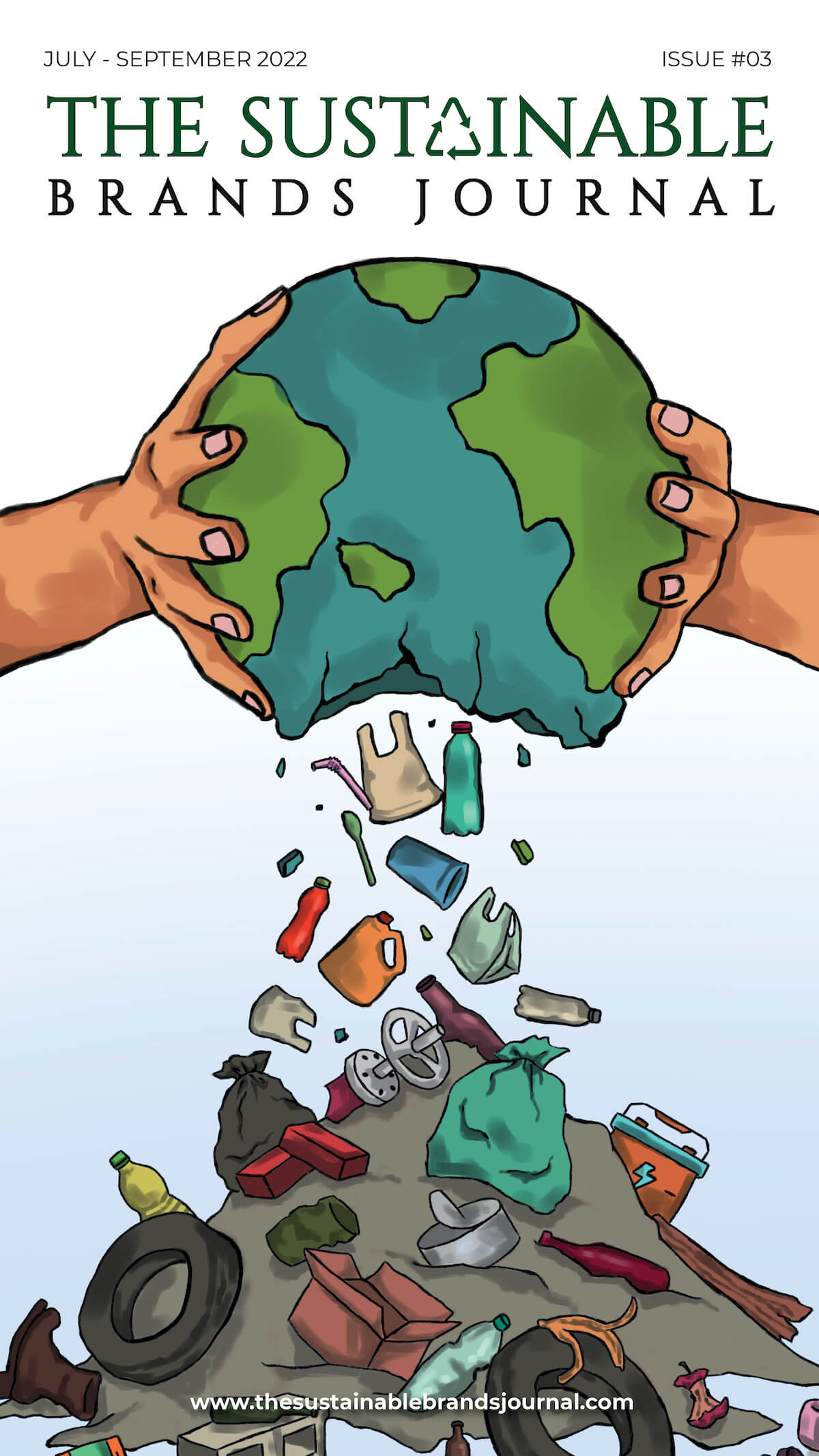
Circular Cities Summit 2.0: Pioneering Sustainable Urban Development in Dubai
The Circular Cities Summit 2.0 was held in Dubai from September 11 to 12, 2024, bringing together global leaders, innovators, and sustainability experts to discuss how circular economies can enhance urban sustainability. Following the success of the first summit in Singapore, this event focused on strategies to reduce carbon footprints, manage waste, and address pressing environmental challenges like climate change, air pollution, and traffic congestion.
As the Editor-in-Chief of The Sustainable Brands Journal (SBJ), I had the opportunity to interview three influential figures in the field of sustainability:
- Dr. Ali Al Jassim: President of the Circular Cities Network, Chairman of the Society of Sustainability and Green Materials, and Former Chairman of Emirates Green Building Council.
- Mr. Damian Tang: Director-General of the Circular Cities Network, Founder & CEO of Circular Cities Worldwide, and Chairman of the IFLA Asia Pacific Region Advisory Board.
- Ar. Peter J. Kindel: Director of SOM Cities and Climate Lead.
These conversations delved into topics such as recycling, waste management, circular design principles, and strategies to combat severe environmental challenges.
Interview with Dr. Ali Al Jassim
Building a Sustainable Future with Circular Cities
Q: Dr. Ali, can you share the primary objectives of the Circular Cities Network (CCN) and its significance in promoting urban sustainability?
A: The CCN was established to foster collaboration among cities and professionals globally to promote circular economies and sustainable practices. Our mission is to connect cities, inspire change, and implement strategies that reduce carbon footprints and waste production. We aim to build on the success of our first summit in Singapore and expand these discussions to cities like Dubai, Europe, and beyond.
Q: How crucial is collaboration among various stakeholders in creating circular cities?
A: Collaboration is vital. Urban planners, engineers, government bodies, decision-makers, and architects must work together to create and implement sustainable solutions tailored to each city’s unique needs. For instance, the UAE has rapidly grown in the last five years, becoming a regional leader through innovative practices and mindset shifts towards sustainability. Hosting events like COP and Expo demonstrates our commitment to these initiatives.
Q: What role does technology play in enhancing sustainability and efficiency in urban environments?
A: Technology, especially Artificial Intelligence (AI), plays a significant role. AI helps cities assess environmental impacts, optimize resource use, and develop more sustainable solutions. Additionally, social media and technology facilitate quick knowledge sharing with the public, which is essential for changing behaviors and contributing to sustainable solutions.
Q: How can organizations align their missions with sustainability goals?
A: Organizations should align their vision and mission with the United Nations’ Sustainable Development Goals (SDGs). This alignment encourages a mindset shift toward sustainability and ensures that all stakeholders are working towards common objectives.
Conversation with Mr. Damian Tang
Awareness and Policy: Driving the Development of Circular and Sustainable Cities
Q: Mr. Tang, what inspired the inception of the Circular Cities Network in 2023?
A: The CCN was founded to promote collaboration between the private and public sectors and to advance sustainable circular economies. We focus on policy, business partnerships, and innovation to drive circularity with the economy in mind. Our goal is to connect cities worldwide to share strategies, knowledge, and best practices.
Q: There’s a misconception that sustainability is inherently expensive. How do you address this mindset?
A: The idea that sustainability is costly is a significant barrier. However, integrating sustainable ideas can minimize costs over time through efficiency and innovation. Cities like Amsterdam have implemented green initiatives that demonstrate economic and environmental benefits. Singapore’s efforts in water circularity are another excellent example.
Q: What advice do you have for beginners looking to adopt circular economy principles?
A: Adopting an ecosystem-thinking approach is crucial. Collaboration with different organizations, including urban planners, environmental agencies, and businesses, is essential. Every individual and organization has a role in driving sustainable development and protecting the environment.
Insights from Ar. Peter J. Kindel
Exploring Sustainable Cities from an Architect’s Perspective
Q: Mr. Kindel, with your extensive experience in sustainable urban development, what challenges do cities face in balancing urban growth with environmental restoration?
A: Balancing restoration, mobility ecosystems, and urban growth is complex. Challenges include unifying diverse visions, securing funding, and overcoming the undervaluation of sustainability’s benefits. Urban expansion often leads to issues like increased wildfire risks due to development in vulnerable areas and outdated infrastructure.
Q: Can you share insights from your notable projects, such as your work in Bahrain?
A: In Bahrain, we developed a holistic environmental plan that included innovative land reclamation while maintaining ecological connections. The project focused on extending shorelines responsibly and integrating natural ecosystems into urban development, showcasing how sustainable practices can enhance both the environment and urban living.
Q: What is your vision for the future of sustainable cities?
A: I envision cities integrated with nature, utilizing restored wetlands and sustainable infrastructure to address climate challenges. It’s essential for cities to have strategic sustainability plans looking 50 years ahead. We need to shift from incremental improvements to transformative designs that actively minimize carbon footprints.
Q: How can we encourage innovation in sustainable architecture?
A: Encouraging innovation requires a willingness to explore new materials, technologies, and designs that prioritize environmental health. Architects and planners must collaborate with policymakers and communities to create buildings and spaces that contribute positively to the environment.
Key Takeaways
- Collaboration is Essential: Building sustainable cities requires joint efforts from government bodies, private sectors, architects, urban planners, and the public.
- Policy and Innovation Drive Change: Effective policies and innovative solutions are crucial in promoting circular economies and sustainable practices.
- Public Engagement Matters: Educating and involving the public leads to behavioral changes that significantly contribute to sustainability goals.
- Long-term vision is Crucial: Cities must develop strategic plans that look decades ahead to address future environmental challenges effectively.
- Technology Enhances Efficiency: Leveraging AI and other technologies can optimize resource use and facilitate sustainable urban development.
About The Sustainable Brands Journal
The Sustainable Brands Journal (SBJ) is a leading publication dedicated to providing the latest news, insights, and interviews on sustainability, climate change, green innovation, and eco-friendly lifestyle practices. Our mission is to inspire and inform individuals and organizations passionate about making a positive impact on the planet.
Watch the Full Interviews
For an in-depth understanding of the discussions from the Circular Cities Summit 2.0, watch the full interviews on our YouTube channel.
Subscribe for More
Stay updated with the latest environmental news, stories, and interviews by subscribing to The Sustainable Brands Journal.
- Subscribe Now
- Read Our Blog
- Follow Us on Social Media: Instagram, Facebook, X, LinkedIn

Prachi, an accomplished Chief-Editor at The Sustainable Brands Journal, has 15+ years of experience in Europe, the Middle East, and India, managing 90+ global sustainable brands. She’s a prolific writer in sustainability, contributing to various publications. Prachi’s unwavering passion and expertise make her a recognized authority, driving positive change and inspiring a sustainable future.





